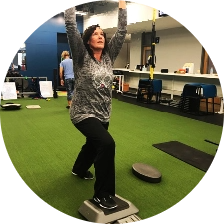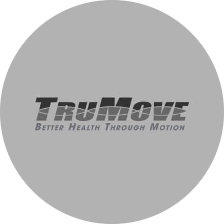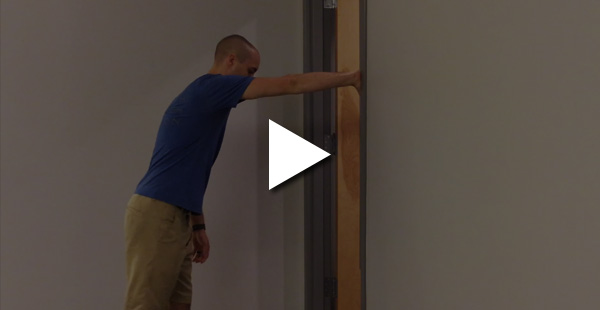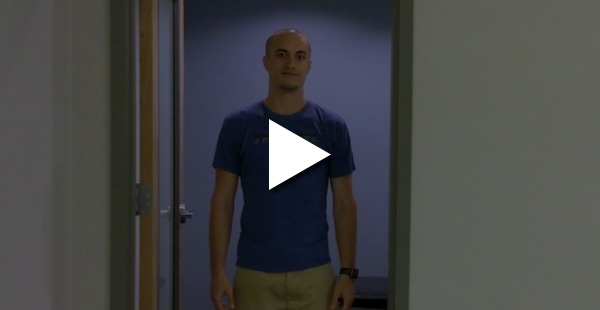Treat Yourself: Shoulder Pain
Shoulder pain can refer to the neck, middle back, elbow, arm and hand. Some of the pain comes from muscular trigger points which can easily be treated by physical therapists. Numbness, tingling or burning may not always signal nerve irritation—please see a physical therapist to assess your symptoms.
Whether it is acute or chronic, shoulder pain can significantly impact your daily life, turning the simplest tasks into big challenges as your arm mobility is reduced. At TruMove, we are here to help alleviate shoulder pain and hopefully prevent future injury through movement-based exercises.
COMMON CAUSES OF SHOULDER PAIN
While sources of shoulder pain vary, there are causes that seem to be more prevalent than others. Among these are poor posture, repetitive activities (lifting, reaching, typing, overhead movements), overuse causing movement impairments, sudden trauma (falls or sports injuries), and poor rotator cuff or shoulder blade strength.
SYMPTOM PRESENTATION
Those who are most likely to be affected by shoulder pain are athletes who use overhead movements, manual labor professionals, and those who sit at a desk or in a vehicle for prolonged periods of time. Symptoms may include restricted shoulder motion overhead, behind the body, or reaching to the side. Pain may occur while sleeping on the affected side, throwing, or reaching overhead.
PREVENTION
Maintaining proper strength in the shoulder and shoulder blade muscles is key in preventing injury. It is also of great importance to maintain proper posture and shoulder alignment when reaching and throwing. Avoid forward-head and rounded-shoulder postures when working at a computer, texting, or driving for prolonged periods. Keep your muscles flexible by regularly stretching the shoulders, neck, and middle back. Keep moving—physical activity will improve your fitness level and emotional state of mind, keeping you healthier and happier.
Questions?
[contact-form-7 id="18" title="Contact form 1"]Contact Us
Your message has been sent. Thank you!
Sorry. Email sending failed!
We have received your message an we will be in touch with you shortly.
Frequently Asked Questions
Answer
Where are you located and what are your hours?
Do I need a referral or MRI before I come in?
Do you offer second opinions?
What are the payment options/insurance options?
What are your cash pay fees?
Hours are by appointment.
We are open from 6:30AM to 6:30PM CST, Monday-Friday.
No, you do not need a referral or MRI prior to coming in.
TruMove is readily accessible – simply call or connect through the website for an appointment.
Yes, we do offer second opinions. Our approach is rooted in understanding the biomechanics of the body, movement, rehabilitation, and orthopedics.
In fact, we believe you should routinely ask for second opinions so you can make the best informed decisions for your own health.
We have a variety of direct cash pay AND insurance options.
- BCBS
- Medicare
- Cigna
- UHC
- All Savers
- Golden Rule
- UMR
Superbill options available for insurance plans not in-network.
- GEHA
- Preferred Health partners
- Tricare/Triwet/VA
- Worker' compensation
Frequently Asked Questions
Hours are by appointment.
We are open from 6:30AM to 6:30PM CST, Monday-Friday.
We have a variety of direct cash pay AND insurance options
- BCBS
- Medicare
- Cigna
- UHC
- All Savers
- Golden Rule
- UMR
Superbill options available for insurance plans not in-network
- GEHA
- Preferred Health partners
- Tricare/Triwet/VA
- Worker' compensation
Membership options are available for those interested in comfort and performance management for individuals, families, teams and corporations.
$89 Assessment/Plan Created.
$120 Full evaluation and treatment provided Memberships options available.
Your message has been sent. Thank you!
Sorry. Email sending failed!


Jessica Witt, Dance & Fitness Instructor
I am so happy I found TruMove! I have been several places and finally feel like I am on the right track to recovery. I am pretty sure Drew is known as ‘the hip whisperer’ to all his PAO patients. He listens to me, assesses my problems, and personalizes treatments/workouts that are helping me heal and get back to my regular active lifestyle.


Aleksandar Tasic, 2016 IRONMAN Arizona finisher
I have made significant progress in reducing pain levels and increasing strength and running activity levels. As soon as my body can absorb the necessary endurance training, I will resume competition full-on, chasing the IRONMAN Hawaii dream.


Brad Wells Gold Medal Champion 2017 US Masters Swimming Nationals
I was extremely pleased with the results at Nationals and I have no doubt the treatment that I received at TruMove played a huge role, especially the Dry Needling. I feel great! I am training harder and more consistently than ever.


Caitlin Ballard 2016 IRONMAN Arizona finisher
I am certain that without the assistance of TruMove, I would still be experiencing daily/nightly back pain. They provided a focused plan of exercises and stretches that I continue daily. They altered treatment methods as needed and I always felt that my concerns were valid and heard. I can now push myself harder during each workout and my sleeping habits have improved tremendously.


Karen Washburn
Whenever I have an issue with any part of my spine or related muscles and ligaments, I go to TruMove first. They are honest about giving you options and suggesting treatments. I have had Dry Needling done in my shoulder, lower spine, and glute – all with great success.


Katie Frutiger
Kim is my PT and I cannot sing her praises enough. She opened my eyes to Dry Needling which has worked wonders on knots that no other treatment could resolve. TruMove is a wonderful atmosphere, too. The staff is so friendly, and they genuinely care about their patients.


Kelly O’Connor
All of my chronic issues need to be dealt with on a regular basis. I have to keep things moving or they get worse. Insurance only takes you so far and then releases you, but with TruMove’s Health Membership, problems are less likely to become huge issues because they are being addressed regularly.


Paul Crider Marathon Runner
I thought I was going to have to scratch my plans to run the 2016 Baltimore Marathon. After several Dry Needling sessions, I was running again. Not only did I cross the finish line in Baltimore, but I also achieved my goal of finishing healthy and under 4 hours. I highly recommend Dry Needling, not only for injury recovery, but also prevention.


Joy Edwinson Physical Therapy Assistant at a local clinic
For 20 years I was dealing with neck and shoulder pain, but Dry Needling has released me from it. The number of headaches I experience is down significantly, my overall energy is up, and the decrease in pain allows me to better treat my patients. I recommend it to all of my friends.


Kathleen Ballard
I needed and wanted PT, but something more movement-based, something other than just stretching. TruMove was recommended. The strengthening exercises had the biggest impact on my recovery. I gained confidence that I could engage in various exercise activities. I am now a regular gym rat!


Kristen Chavez
I noticed an incredible improvement with Dry Needling and the results were happening so much faster than with regular PT and stretching. When I started, I could barely walk or sit down. Now I’m working out daily. There are no limits on what I can do. It’s wonderful!


Brian Schober
Three weeks out from high school baseball tryouts my freshman son was having some pretty bad back pain that had been lingering for around a month. We were referred to Josh at TruMove and what he was able to do was pretty amazing. Josh put together a plan and my son did a good job with his homework. Unbelievably enough, he was very close to 100% by the first day of tryouts. Highly recommend!



 Overland Park
Overland Park



